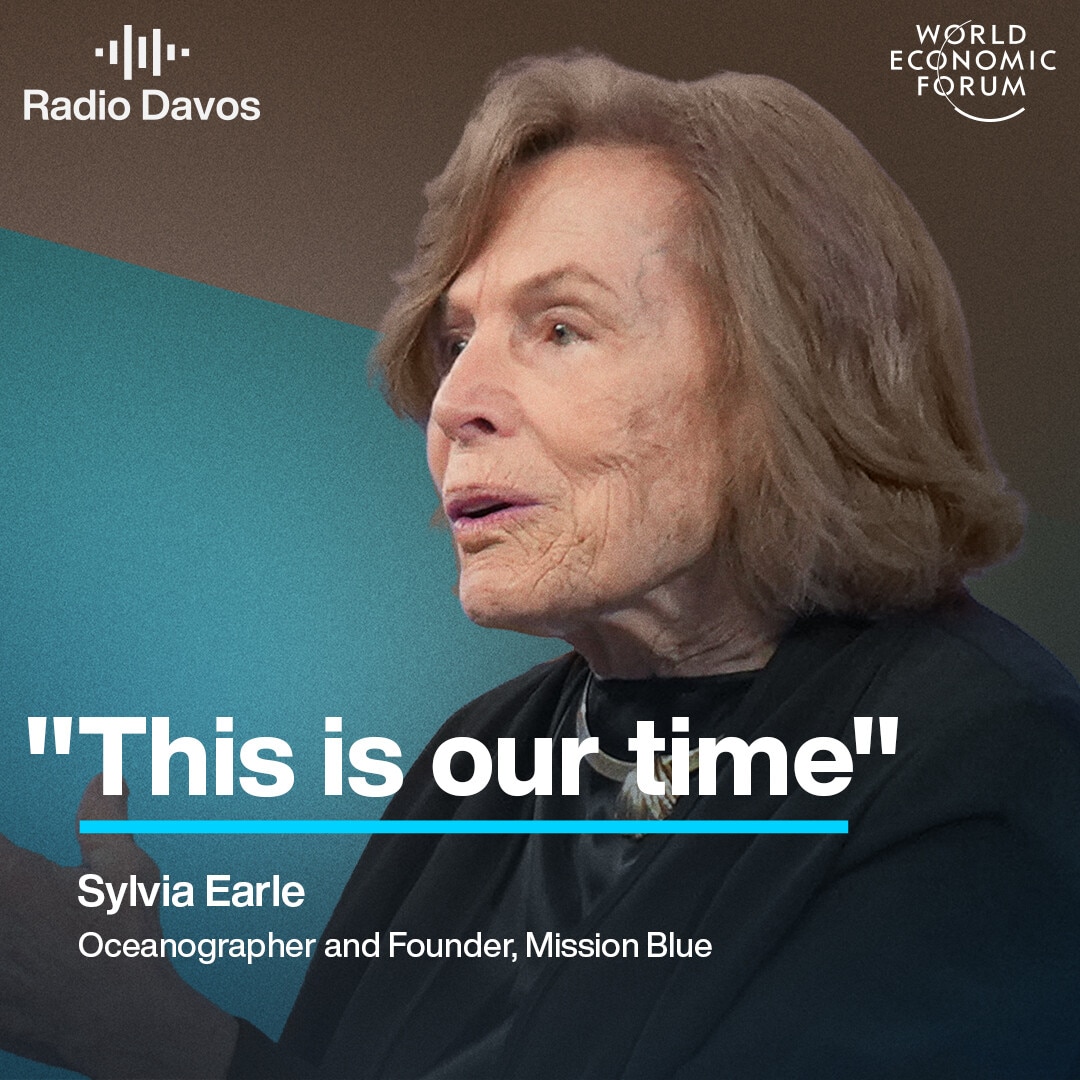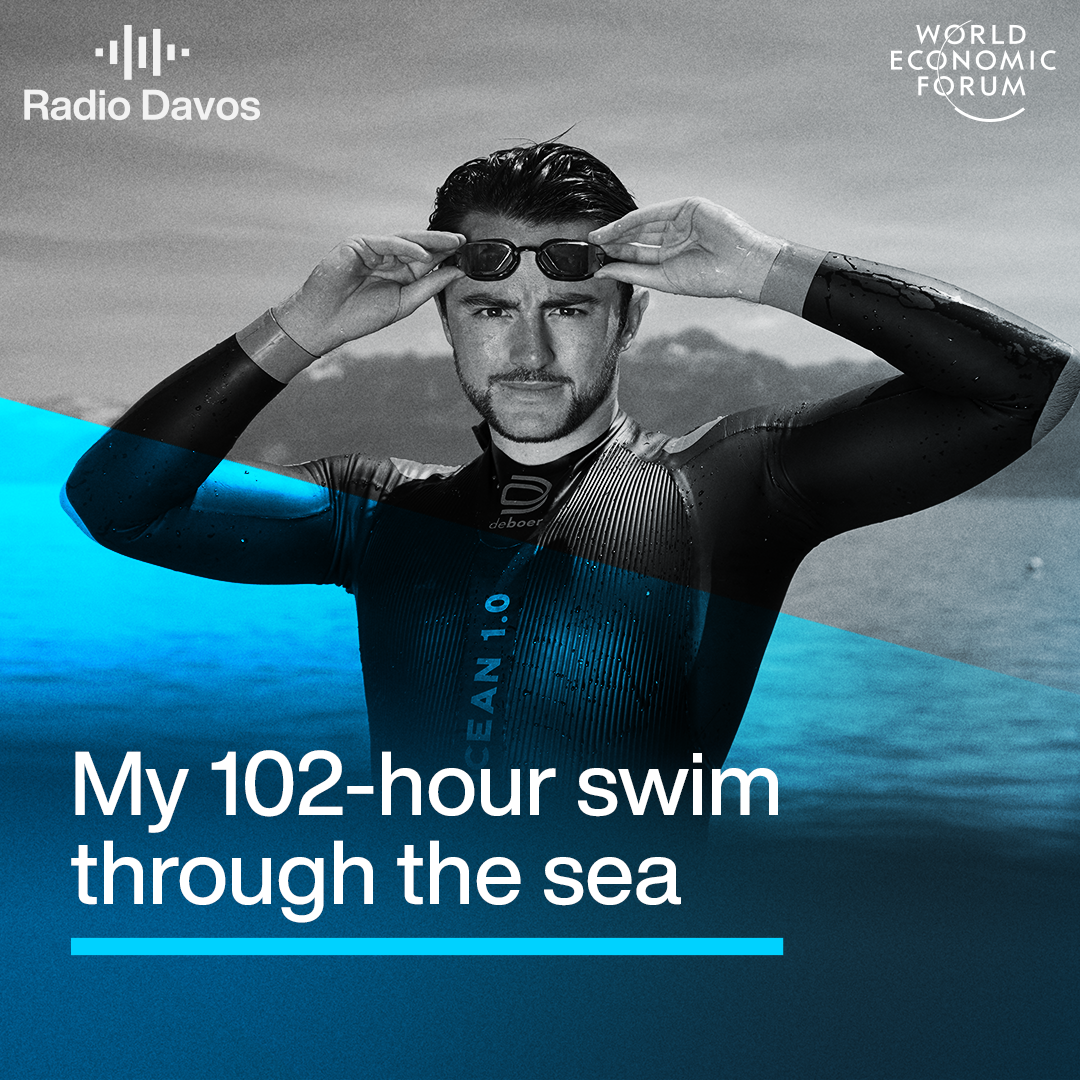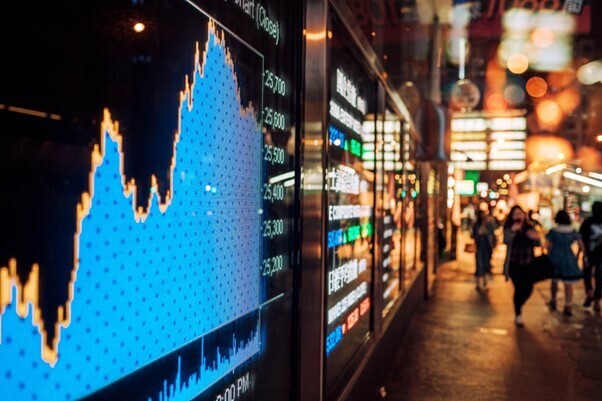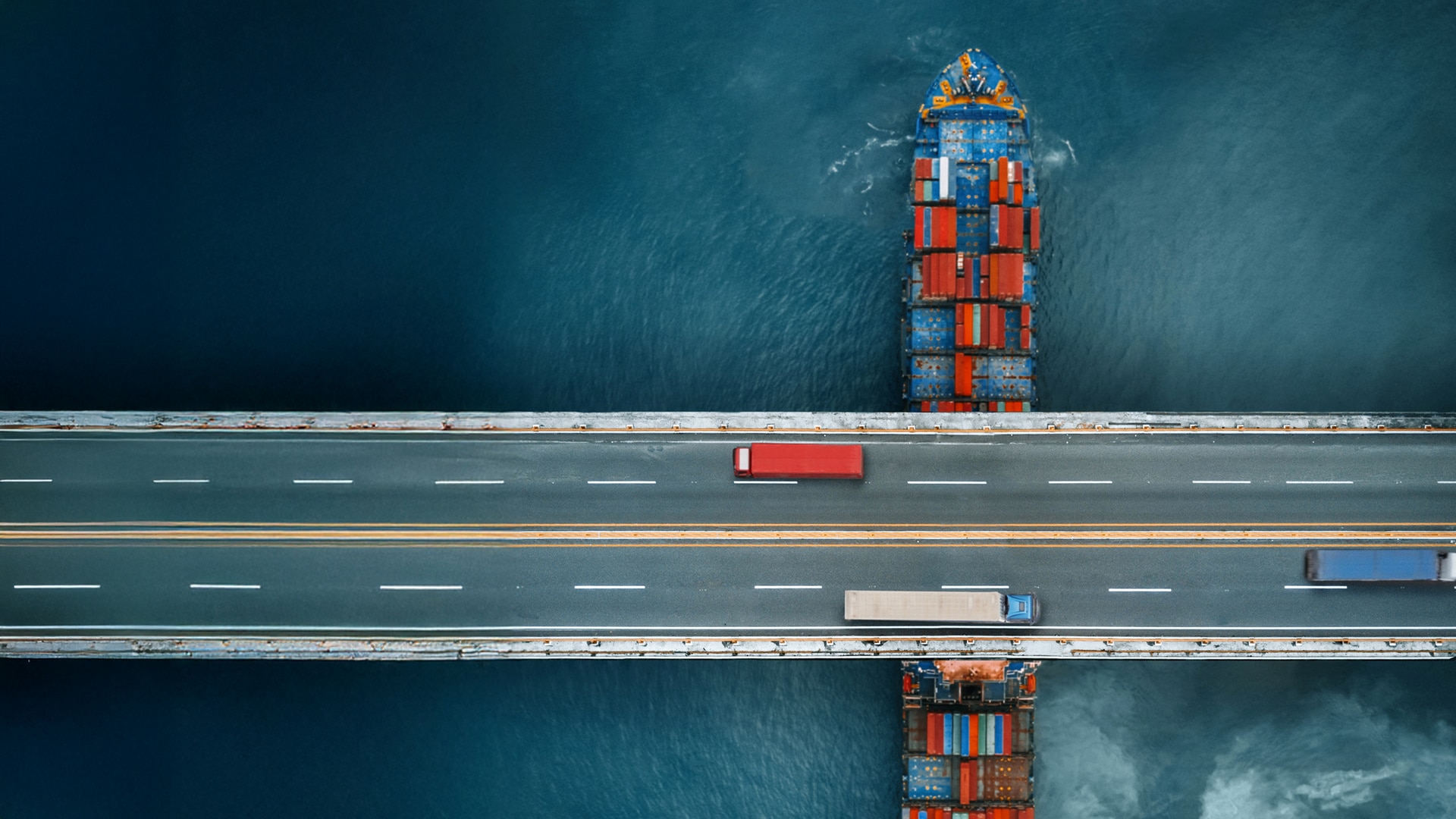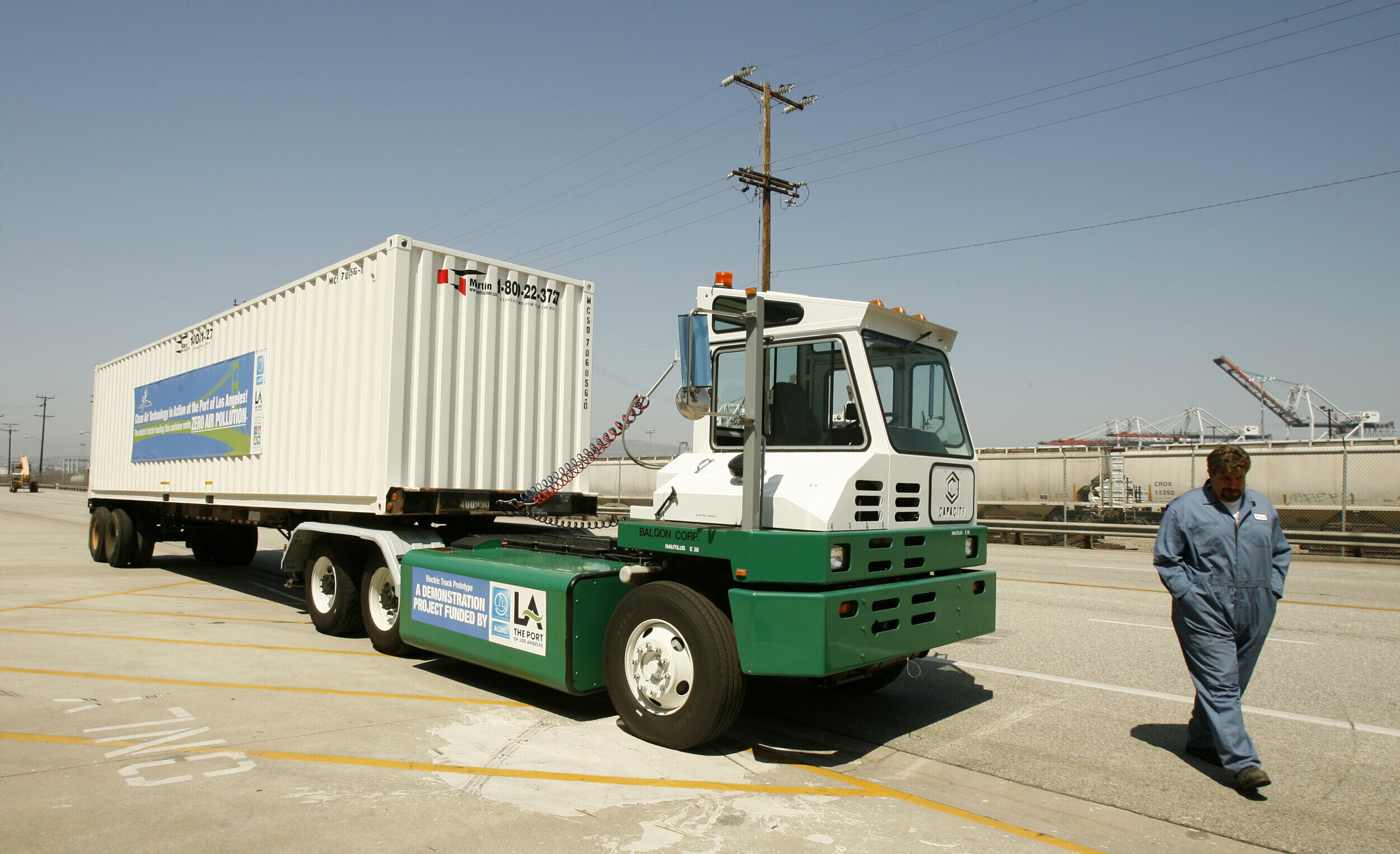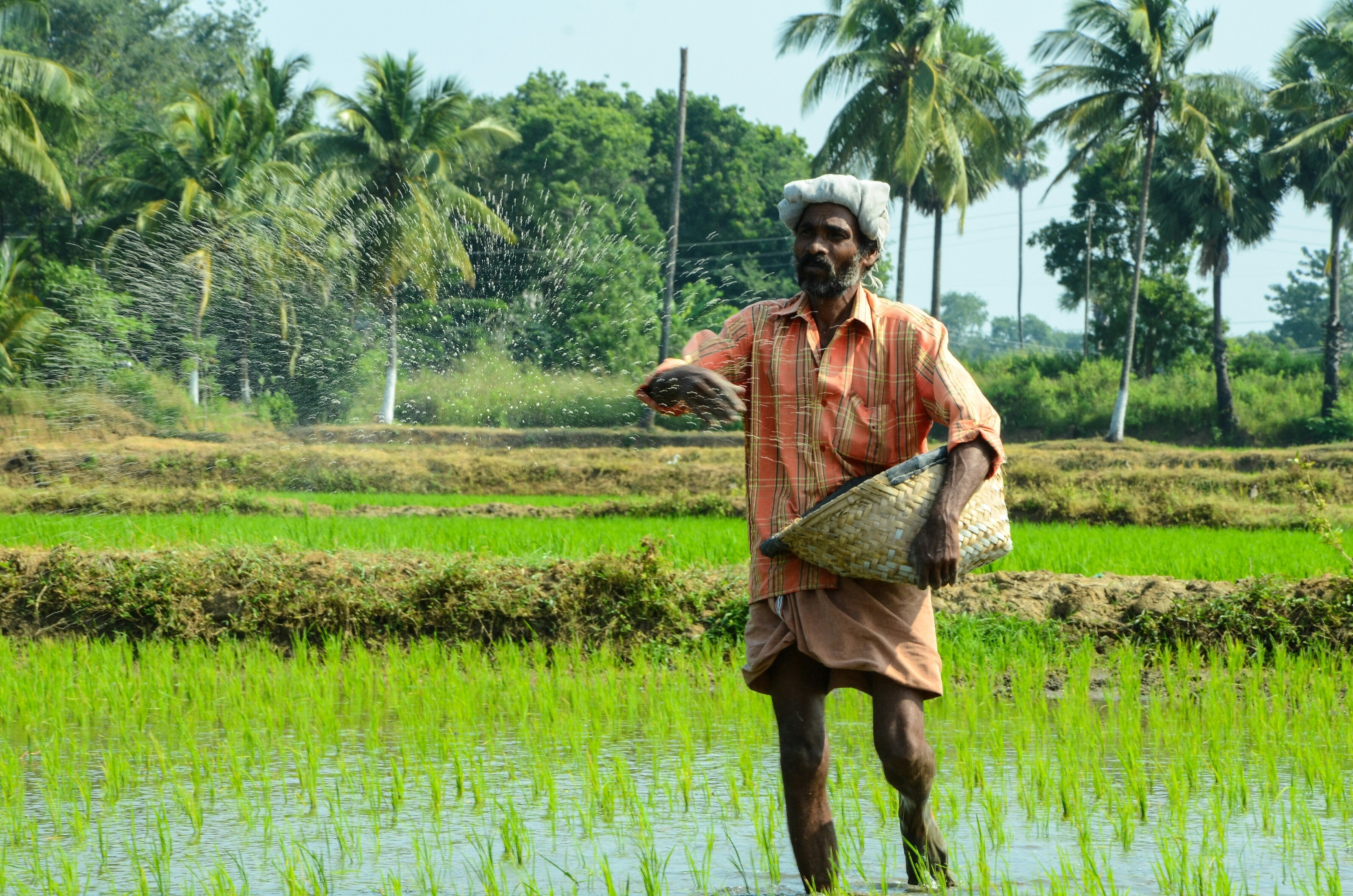Meeting in the metaverse: Actor Rainn Wilson joins us on the virtual polar ice
播客文字稿
This transcript has been generated using speech recognition software and may contain errors. Please check its accuracy against the audio.
Rebecca Ivey, Head of Global Collaboration Village, World Economic Forum: What's amazing about being able to meet in a virtual environment is that we can transport you to places you don't normally go in real life, but you have the feeling of being together in that experience.
Robin Pomeroy, host, Radio Davos: Welcome to Radio Davos, the podcast from the World Economic Forum that looks at the biggest challenges and how we might solve them. This week, in a special video-podcast, we take you inside the Forum's Global Collaboration Village - a meeting place in the metaverse...
Rebecca Ivey: So, for example, say you have a climate scientist in the Arctic and a policy maker based in a different part of the world, we can actually transport those two people together into a virtual simulation of the Arctic or the Antarctic to visualise climate change impacts in real time.
Rainn Wilson, actor and environmental activist: I'm about to enter the metaverse. There I am. There's my avatar. Fabulous!
Robin Pomeroy: The World Economic Forum, in partnership with Accenture and Microsoft, is creating virtual worlds to help people understand complex problems to get them talking.
Joining me in this Global Collaboration Village, in something called the Climate Tipping Points Hub, is actor and environmental activist Rainn Wilson.
Rainn Wilson: Oh, look at that. Who's Robin Pomeroy?
Robin Pomeroy: Hello? Who's Rainn Wilson?
Rainn Wilson: Hi, Robin. How are you?
Robin Pomeroy: Hello. Very pleased to meet you.
That's right, Dwight from The Office joins us in the metaverse.
Rainn Wilson works with a group called Artic Basecamp that is raising awareness of the impact of climate change on the poles and the whole world.
Subscribe to Radio Davos wherever you get your podcasts, or visit wef.ch/podcasts.
I’m Robin Pomeroy at the World Economic Forum, and with this dive into the metaverse...
Gail Whiteman, Executive Director, Arctic Basecamp: I'm hopeful that that by having an immersive experience, we can reach many more people in an impactful way that we couldn't have done other otherwise.
Robin Pomeroy: This is Radio Davos
Welcome to Radio Davos and a special video podcast version of Radio Davos because we get to dive in literally and metaphorically into the metaverse and into the World Economic Forum's own metaverse, which is called the Global Collaboration Village. And before we do dive into it, I'm welcoming here into what is now the podcast studio Rebecca Ivey, who's head of the Global Collaboration Village. Hi Rebecca, how are you?
Rebecca Ivey: Hi, Robin. Great to be here.
Robin Pomeroy: Great to have you here. You're head of the Global Collaboration Village. Imagine I know nothing about it, which isn't true because I've been in it. But imagine I know nothing about it. What is it?
Rebecca Ivey: Fantastic. Well, I'm delighted to be able to speak to you today about the Global Collaboration Village. And I think the answer is partially there in the name. It is intended to be a truly global platform that allows us to connect decision makers from around the world to problem solve together.
It is focused on collaboration and we believe this is actually one of the first purpose driven collaboration platforms that exists in the metaverse today.
And it is designed to be a village designed to be open and inclusive to a wide range of users and to really bring in those who have very diverse perspectives from around the world into a common community for problem solving.
So the global collaboration Village is the purpose driven metaverse of the World Economic Forum. It's an initiative in partnership with Microsoft and Accenture, and we are building it as we speak. So it's exciting to be able to speak to you about it today, but also to share what we're learning and what we're excited to build going forward.
Robin Pomeroy: So the World Economic Forum is best known for Davos, the Annual Meeting of the World Economic Forum, every January, usually, when there's not a pandemic. And that brings people together heads of industry, political leaders, academics, social society to discuss big issues. So could you say the Global Collaboration Village is kind of a virtual replica of that? Or would that not be correct?
Rebecca Ivey: I think replica would imply that it's a simulation or a pure copy paste of what we do in person. And that's actually far from what we're building with the Global Collaboration Village.
So I think it's a great jumping off point. I think it's important to remember that the annual meeting in Davos is one week of the year in which leaders come together to set the global agenda for the year.
But the actual work of creating real world impacts and moving solutions forward takes the entire year to do. And the Global Collaboration Village is coming in to fill that void to make sure that we have the best possible platform to actually accelerate and enhance the collaboration that's needed year round to make sure that issues like those that do come up on the agenda in Davos are actually followed through, and that all of those many stakeholders you mentioned from business and government to civil society, young leaders, university leaders, that these different stakeholders are able to come together year round and feel a sense of common purpose and be able to share their learnings and their progress.
Robin Pomeroy: So how would it work if you were having a meeting in the Global Collaboration Village, if I'm somewhere not here in Geneva, but I want to join a meeting?
What would it look like for me physically in the real world? What would it look like? And then what would it look like inside?
Rebecca Ivey: Absolutely. So in the real world, there are two ways to join the Global Collaboration Village. You can join using a virtual reality headset. And you could also join actually through 2D, through your laptop.
So the idea of the Global Collaboration Village is also to be open to users around the world regardless of what kind of technology they have at home. For those users joining in virtual reality, they would be immersed in a 3D environment where they would be interacting with others who are in that environment as if they were in the same room.
But what's amazing about being able to meet in a virtual environment is that we can transport you to places you don't normally go in real life, but you have the feeling of being together in that experience. So, for example, say you have a climate scientist in the Arctic and a policy maker based in a different part of the world, we can actually transport those two people together into a virtual simulation of the Arctic or the Antarctic to visualise climate change impacts in real time.
And we can also leverage virtual reality or 3D modelling tools in that environment to be able to show the impact of a 1.5 degree rise in global temperatures, a 1.75 degree rise or a 2 degree temperature rise on the city where that policymaker is from and show how it's linked back to the situation in the Arctic.
So this is an example where we would be leveraging the power of VR or the metaverse to transport people to dangerous or impossible places to reach. But for those participants joining from their laptops or computers, they can equally participate in that conversation and be part of the discussion: what are we going to do about it now that we have a common understanding of the issue now that we've experienced it in this virtual way? How are we going to actually have the real world solutions at hand?
Robin Pomeroy: So that is one of the worlds you've built in it. Does it have a name?
Rebecca Ivey: Yes. The Climate Tipping Points Hub.
Robin Pomeroy: The Climate Tipping Points Hub.
Well, I've been there. I was actually physically still here in Geneva. But in a meeting in New York, during the U.N. week, the World Economic Forum holds its Sustainable Development Impact Meetings. And we linked up in there.
Let's see and hear the meeting. This is Gail Whiteman, who helped build that world because she she's a professor of sustainability and she runs a thing called the Arctic Basecamp, which camps out on the mountain at Davos to draw attention to the environment, particularly to the impact of global warming on the poles and the impact that has on the rest of the planet.
So let's take a look and a listen at me or my avatar talking to Gail in the Global Collaboration Village.
Gail Whiteman: Hi, Robin.
Robin Pomeroy: How are you? Let me high five. You.
Gail Whiteman: Okay, let's give it a go.
Robin Pomeroy: I think I got you in the head. I'm sorry about it.
Gail Whiteman: That's okay. I won't take it personally.
Robin Pomeroy: We've never met in person. I believe we've corresponded a few times in the past. I'm Robin Pomeroy, I'm the host of the Radio Download podcast at the World Economic Forum. And you're Gail Whiteman. Tell us who you are and what you do.
Gail Whiteman: Great to meet you virtually anyway, Robin.
I am a professor of sustainability at the University of Exeter, so I'm a social scientist and what I do is I take the natural science data and I try to make it understandable to decision makers and regular people. I'm also the founder of Arctic Basecamp, which is a science communication platform which was quite involved in this amazing space where we are today.
Robin Pomeroy: Great. Well, I'm going to ask you more questions about you after you've given me the tour of this part of the Global Collaboration Village. So I'm your guest. You've been here before. Why don't you tell me what we're looking at, what we're seeing and hearing? Yes, give me the tour.
Gail Whiteman: Well, great. So why don't we go over here and look out the window? So let's see if you can follow me here.
Robin Pomeroy: You teleported.
Gail Whiteman: I teleported.
Robin Pomeroy: I can do that. So I can join you there.
Gail Whiteman: Boom. Here we are. Okay, Robin. So if we look outside at this amazing space, we can see that we are by the West Antarctic Ice Sheet. And it is stunning location and it's also a threatened location. So even though it looks beautiful, it's changing rapidly and actually will cause us a lot of global risks.
Now, if we turn around and we look inside this room, we are in the Polar Tipping Points Hub, where it's a combination of data feeds and we'll show different kinds of data as well as at the far other corner of the room, an Earth simulator.
So if we can come over here, I want to teleport over here. If we can come and look at this data feed, if you can join me.
So now what we've got, Robin, is a whole bunch of different data, and we're looking outside at the West Antarctic Ice Sheet. And indeed, when we look on the screen, we see all kinds of science data that's showing us how much of that ice sheet we've been losing over time. And we can see the numbers are not going in the right direction.
We also see on the screen here the hotspots on the West Antarctic Ice Sheet. And then again, we can also take a look at at how things have changed over there. We've got feeds of of actual parts of the Antarctic from our scientific collaborators.
So what we can see is that certainly the Antarctic is changing rapidly. Now if we're going to teleport, if we turn around the other direction, Robin, how we're going to teleport over to the data on the other part of - I'm over here. - right, good. So you're right at the front and you can see that this is now the Arctic.
So the Polar Tipping Point hub has both data from the Antarctic which we're seeing outside, we'll see the Arctic in a minute, and on the Arctic. And this is important because the Arctic, we are currently at the Arctic summer sea ice minimum. And we can see on the chart that you're looking at right now how much the Arctic is warming faster than the rest of the planet. And then we can see here data on Greenland and how it is melting and changing. Which is unbelievable if you take a look at the red here.
Robin Pomeroy: So what we've got here for people listening who are not watching. So let me just describe, how do you describe this room we're in. It's kind of a laboratory that's in the in the Arctic. We're in a room when we're inside at the moment. And you've been showing me these screens with charts, with videos. On this one, these are the sea ice content here and also showing temperature changes. Tell me difference between this red line and the blue line here.
Gail Whiteman: Well, the blue line is the global temperature change, which is going up over time. But if you take a look at the red line, that's the Arctic temperature and you can see it's going up much more. It's I mean, it's the spikes are significantly higher.
The Arctic in general is warming four times faster than the rest of the planet. And parts of the Arctic, like Svalbard, which is an island off the coast of Norway, are warming seven times faster. So the Arctic is really ground zero here for climate change.
The second chart that we're seeing now is monitoring the sea ice extent. And we can see that we are in a trajectory that is low, low and low.
We're around the fourth or fifth lowest sea ice extent in the summer ever. And of course, that's a real concern because what happens in the Arctic doesn't stay there and affects the rest of the world.
So the other screens that we're seeing above that are actual video shots of a scientific trip through the Arctic, and that's the Northwest Passage. That's the Louis St-Laurent Canadian scientific icebreaker here.
The final chart we've got, which is very concerning, especially for global risk, is the Greenland surface melt extent data feed. And we can see that that red line is massively higher than it should be, which is a concern of course, that means that what we're losing on Greenland is going into the sea and causing sea level rise and problems with things like extreme weather and storm surges that are coming in with that.
Robin Pomeroy: So that was my avatar bobbing around, for anyone who's listening rather than watching this, talking to Gail. Neither of us had legs, I noticed. Well, you know, makes it interesting. We can teleport. We can zap from one side of the room to the other. People do ask though, why don't we have legs?
Rebecca Ivey: It's very interesting. One of the things that we've learned in creating the Global Collaboration Village is, on the one hand, we're bringing an entirely new community of users to the metaverse.
Global decision makers, business leaders haven't necessarily been spending a lot of time in VR, in the metaverse. And so one of the greatest learnings that we've had is people are so excited about the potential - how do we meet them where they're at in terms of their curiosity, but also explain where are we with the technology?
And I think even since you entered the village back in September, we've seen video go viral of the very lifelike Avatar interview that happened between Mark Zuckerberg and Lex Fridman.
Robin Pomeroy: I'm so glad you brought that up.
Rebecca Ivey: Yes. And I think we can see where the technology is going. And we also know, though, that there's a huge complexity and high amount of data that has to be stored and exchanged to enable those very lifelike environments and engagement.
So right now, when we're building the Global Collaboration Village, we are focusing on being able to invite the most number of people possible into the space, which means a slightly more graphical representation through the Avatar. And at the same time we want to have a truly interactive environment.
And again, to have that be truly lifelike would require everyone to have a very high-powered headset. And as inclusion is one of our key goals of building the Global Collaboration Village, we want to make sure we're building an environment that people from around the world, regardless of the technology they have, regardless of the bandwidth that they have, would be able to participate. But we're very excited to see those developments happening in the technology space.
Robin Pomeroy: So for anyone listening not watching this, I mean, I guess I would describe what you're seeing, that it's it's it's not realistic. It's a representation. It looks like a good video game. And what's really interesting for me is the what you hear, actually, because as you move around, the sound, you get closer to someone you hear them more loudly, as you turn around there's this stereo impression. I think for me that's the main difference between meeting someone on Zoom say and meeting someone in a in a metaverse situation.
Rebecca Ivey: Absolutely. So I think this is one of the reasons why collaboration feels more natural and more normal in an immersive VR environment, because you do have the ability to pull somebody aside and have a side chat without interrupting the entire room. And you have the ability to also listen to the environment.
When we brought you into the Arctic space in the Tipping Points Hub, you could actually hear the sound of the wind moving across the ice. And I think this is, again, a way of increasing empathy and awareness and also the feeling of being closer to those who are around you. So be it the Tipping Points Hub that you visited or our Town Hall that is set up for boardroom meetings or plenary presentations, there's that feeling of really being with those who are with you in that in virtual environment, even if they're sitting 3,000 or 6,000 miles away.
Robin Pomeroy: Maybe we could go outside and get some fresh air.
Gail Whiteman: Yes, let's let's get out there. It is a bit hot in here.
Robin Pomeroy: I'm out here.
Gail Whiteman: Where are you? Oh, I'm over here. I'm over here.
Robin Pomeroy: I'm looking around for you. There you are. I can stroll over to you.
So I will describe the scene for those who are listening to this as a podcast. We are now on ice. I'm looking down. We have no legs, so I can't feel the ice under me. But I can hear the wind. The sun is very low and it looks chilly. I do feel a little bit cooler here.
You've given me a tour of the Global Collaboration Village. What is the point of it? What is it you're hoping to achieve?You've worked with the World Economic Forum to create this site, which I've just seen, our viewers and listeners have a taste of. Practically, what good is it going to do?
Gail Whiteman: Well, you know, our hope is by bringing the poles into such a central organization like the World Economic Forum in an innovative, immersive platform like the Global Collaboration Village, it will be much easier for people at Davos and beyond to understand that what's happening in the poles is really, really significant.
The data is worrying and the global risks escalating is worrying. And really the headline is, is that 1.5 C is not a target. It's a physical limit, that we want to avoid getting into a dangerous overshoot at all costs.
So the Collaboration Village and, again, our role at Arctic Basecamp, is to supply the science and make sure that it's robust. But the much larger group that's been involved in this is about how do people with power collaborate to actually have bigger, faster solutions out there to slow down the changes that will happen regardless of where we end up, but certainly prevent the worst of the tipping points from being triggered.
Robin Pomeroy: And perhaps the Global Collaboration Village, having this Arctic landscape is a way for people who've never been and who can't go to a place like this to give just a flavour of it.
As you say, maybe people don't think about the poles. People aren't living in most of these places or huge numbers aren't living there. And this is a way of taking people there without actually them having to go there. Do you think that could potentially be a benefit of what's been created?
Gail Whiteman: Yes, I think I'm I'm hopeful that that by having an immersive experience, we can reach many more people in an impactful way that we couldn't have done other otherwise.
Robin Pomeroy: So the other person I met, there were two people I met in the metaverse. They were both physically in New York, but I was here in Geneva. And that was the actor Rainn Wilson, who plays Dwight from the American version of the comedy The Office. And he works with Gail because he's a campaigner on climate change, and he works very closely with Gail on her work on the poles and the melting ice caps.
So I managed to grab a couple of virtual minutes with Rainn Wilson, and we went both inside the room and then we went outside onto the ice. Let's check that out.
Rainn Wilson: Oh, look at that. Who's Robin Pomeroy?
Robin Pomeroy: Hello? Who's Rainn Wilson?
Rainn Wilson: Hi, Robin. How are you?
Robin Pomeroy: Hello. Very pleased to meet you. We can five.
Robin Pomeroy: What is your connection?People will know you from the TV. What's what's your interest in the polar environment and climate change?
Rainn Wilson: Well, I'm a board member of the Arctic Basecamp, which is a non-profit that Dr. Gail Whiteman founded. And we took a trip together to Greenland. And I am passionate about communicating issues around climate change. And Gail has convinced me that the Arctic is actually quite, quite important and that the enormous and rapid changes that are happening in the Arctic affect us all in the temporal zones, especially in the developing countries. And it's really important for people to understand the links between those two systems. As we say, what happens in the Arctic doesn't stay in the Arctic.
Robin Pomeroy: How do people receive your message? You know, you've got a following. You've got a fan base. So probably people are listening to you, but you also get opposition from the climate sceptics, people who think, oh, he's an actor doing kind of 'woke stuff'. Do you ever get that.
Rainn Wilson: Yes, absolutely. So the the quote unquote climate sceptics certainly attack and and belittle my efforts. But I think it's really important for people that work in climate communications to try and reach the moveable middle.
Rainn Wilson: Oh, look at that. Wow. Hi, Robin.
Robin Pomeroy: Hello.
Rainn Wilson: Incredible.
Robin Pomeroy: Are you feeling the you feeling the icy winds?
Rainn Wilson: I hear the icy winds. This looks like another planet. This is so gorgeous. Wow.
Robin Pomeroy: People who are listening to this are not seeing it, could you describe what you're seeing?
Rainn Wilson: I'm seeing a polar landscape with a beautiful sunrise or sunset and gorgeous colours. It's really beautiful.
Thanks for having me, everybody. I'm going to evaporate now. I'm going to beam down to the mothership. Thanks, Robin. So long.
Robin Pomeroy: So that was me on the ice in the metaverse. So what's where do you go from here? We are as we speak now, a month or so away from Davos. Will the Global Collaboration Village be a feature there?
Rebecca Ivey: Absolutely. So this upcoming Annual Meeting in January 2024 will be the first full programme of panel sessions, community working sessions and partner hosted conversations taking place inside of the Global Collaboration Village.
So we will be bringing those participants who are in Davos in person into VR headsets to experience the Village and to be able to interact for themselves, to go to the Arctic or the Antarctic, to be able to go to a factory floor and see the latest in augmented technology to help workers in the future of manufacturing to be able to visualise global supply chains and how they're interconnected from a bird's eye view.
They'll be able to do that through joining that programme in Davos in VR headsets. But we will also have remote joiners in those discussions. So we will have other participants and experts from around the world joining in to those dialogues from their own locations. But in a way, in essence, being in the same virtual room as those participants who are onsite in that Village.
You know, just thinking back to your experience on the ice, there's a fascinating NASA interview with Nicole Stott, an astronaut, and she talks about how being up in space helped her realise that there isn't anything on one side of the planet that isn't affecting the other side of the planet. And this experience has really reinforced her view of the planet as an interconnected system.
And I think that's very much what we hope to do by bringing this village environment, this platform, to people, whether they are in-person or joining from different locations, is that it's really a tool for visualising interconnectedness. And we'll be able to go from one environment in the village to another with a click, rather than having everybody in one room that has just a very fixed setting where we can only look at slides up on a screen, we can actually transport an entire room of decision makers from one place to the other in the context of a 30-minute conversation.
And so we really see that as being the most exciting aspect of the programme we're bringing to life in Davos.
Of course, in 2024, we have much bigger ambitions. We really aim to open up our virtual events calendar to the first set of communities that will be using the Global Collaboration Village as a problem solving platform to address their real world initiatives. So we are going to be learning from them, taking their feedback into account to build continuously and iterate continuously in terms of how we build the village.
Robin Pomeroy: It's really interesting because you say, you believe this is the first kind of custom built metaverse meeting place, am I putting it the right way?
Rebecca Ivey: Well, there are other platforms out there that run excellent events in VR or that can create an excellent consumer experience in VR. I think what is unique about the Global Collaboration Village is that it is purpose-driven at its core and we are focusing on collaboration.
So it's beyond just meeting and being at an event together. It's having a persistent place where we can come back together multiple times throughout a year and actually bring new stakeholders into the conversation, bring them to the same level of shared understanding by really immersing people in complex topics in a way that they feel they don't just see it, they don't just think about it, but they can actually feel the impacts of those challenges. And that is, I think, the unique space that we are building.
Robin Pomeroy: It's going to be really interesting to see how people react to that, how they take it on board. You've already had some experience you've taken in business leaders, I know, already. What are they telling you about that experience
Rebecca Ivey: So we've had nearly a thousand leaders already come into the space, be that in the earlier pilots of the Global Collaboration Village that were featured in the Annual Meeting 2022 and 2023. But those were very much pilots in the sense that we were bringing our partners in to see what the technology could be used for.
What is different now is that we are actually going to be using it for those purposes of accelerating collaboration, of increasing insights and actually leading to real world action.
So I think what is going to be exciting for the coming year is really expanding that community that is using it repeatedly, not just coming in once, but really building it into how they are addressing the challenges their organisations are facing and also how they're showcasing solutions that their organisations have come up with that could be shared and scaled with a wider audience.
Robin Pomeroy: So this is still in its early-ish stages. As you mentioned, it was at the last Davos. In fact, if you were listening to Radio Davos back then, you'd have heard me - I did go into the Global Collaboration Village. So please do listen back to that. But how early is it? Are people already getting involved in it?
Rebecca Ivey: So we actually already have a community of nearly 140 organisations that have joined as village partners.
Robin Pomeroy: By organisations you mean...
Rebecca Ivey: Universities, businesses. We have governments and we have non-profit organisations and NGOs who have joined up already to, not just use the Global Collaboration Village but to build it with us.
And I think this is again why the Global Collaboration Village is an extension of what the World Economic Forum does. We are not just hosting and convening these decision makers on this platform. We want to build the platform with our partners. And I think that's something where technology offers us a really unique opportunity to open up and democratise the kinds of conversation and the kinds of collaboration that happens through the World Economic Forum.
By opening up this entire platform to our partners, they will be building their own virtual presence in the Village. They will be able to invite their own guests, host their own events, and showcase solutions and bring challenges to this global community through the Village.
So, again, I think what's truly exciting about it is that we're stretching the potential of technology to open up and include an even wider group of stakeholders and citizens in shaping solutions to global challenges.
Robin Pomeroy: Okay, so if I'm a company whatever, in theory, I could come in and build what? A shopfront. A lounge. I could welcome people in to my space within the Global Collaboration Village?
Rebecca Ivey: You could build a virtual pavilion in the stakeholder campus, and from there you could showcase solutions that your organisation is already working on. For example, Arctic Basecamp - Gail Whiteman, who you mentioned earlier in this interview, Arctic Basecamp is one of the first organisations to build a virtual pavilion in our stakeholder campus. That means they'll be able to host their own discussions at Davos with virtual participants and they'll be able to feature not just their own knowledge and resources through their pavilion, but be able to take their visitors through the Tipping Points Hub and show them this important data as a jumping off point for them to engage stakeholders in the real world.
Robin Pomeroy: Well, it's going to be very interesting. We'll be looking out for that at the Annual Meeting in a few weeks time.
Rebecca Ivey, head of the Global Collaboration Village at the World Economic Forum. Thanks for joining.
Rebecca Ivey: Us. Thank you, Robin.
Robin Pomeroy: Thanks to all our guests on this episode, Gail Whiteman, Rainn Wilson and Rebecca Ivey.
The images and environmental sounds seen and heard on this episode in the Global Collaboration Village were developed in partnership with Accenture and Microsoft.
Find out more about the Global Collaboration Village at www.globalcollaborationvillage.org. And follow all the action from Davos at wef.ch/wef24 and across social media using the hashtag #WEF24.
And if you are listening to the audio version of this podcast, and want to watch it, you can find the video on our YouTube page, www.youtube.com/@wef - where you can find many other podcast episodes. All our podcasts, and transcripts, can be found at wef.ch/podcasts - and on any podcast app.
Radio Davos will be back very soon. Thanks to you for joining us.
Scroll down for full podcast transcript - click the ‘Show more’ arrow
What's Dwight from The Office doing in the metaverse?
Actor Rainn Wilson joins us in avatar form to check out a virtual world created by the World Economic Forum that aims to raise awareness of the impact of climate change on the Arctic and the rest of the world.
We also hear from Gail Whiteman, Professor of Sustainability at the University of Exeter Business School, and Executive Director of Arctic Basecamp on her hopes for action to stop the Earth reaching disastrous tipping points.
And Rebecca Ivey, head of the Global Collaboration Village, tells us how the metaverse can bring people together in a unique way.
Watch the video: https://www.youtube.com/watch?v=bu0CO8qT53E
Follow all the action from Davos at wef.ch/wef24 and across social media using the hashtag #WEF24.
Links:
Global Collaboration Village: https://www.globalcollaborationvillage.org/
Arctic Basecamp: https://arcticbasecamp.org/
Related episodes:
For a longer interview with Rainn Wilson and Gail Whiteman, listen to our sister podcast, Meet the Leader:
Our visit into an earlier version of the Global Collaboration Village:
And more...
More podcasts
Check out all our podcasts on wef.ch/podcasts:
分享:
更多集:
每周 议程
每周为您呈现推动全球议程的紧要问题(英文)

